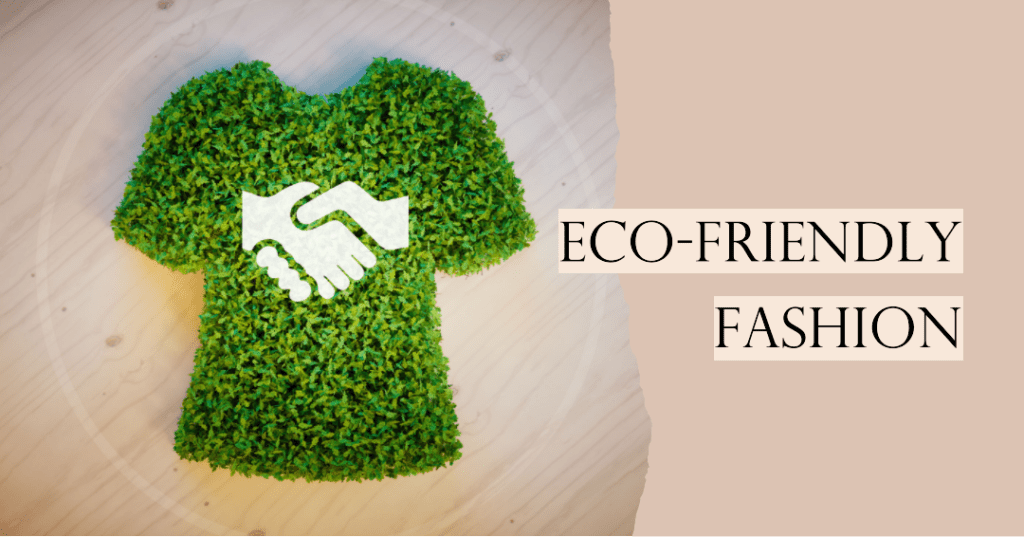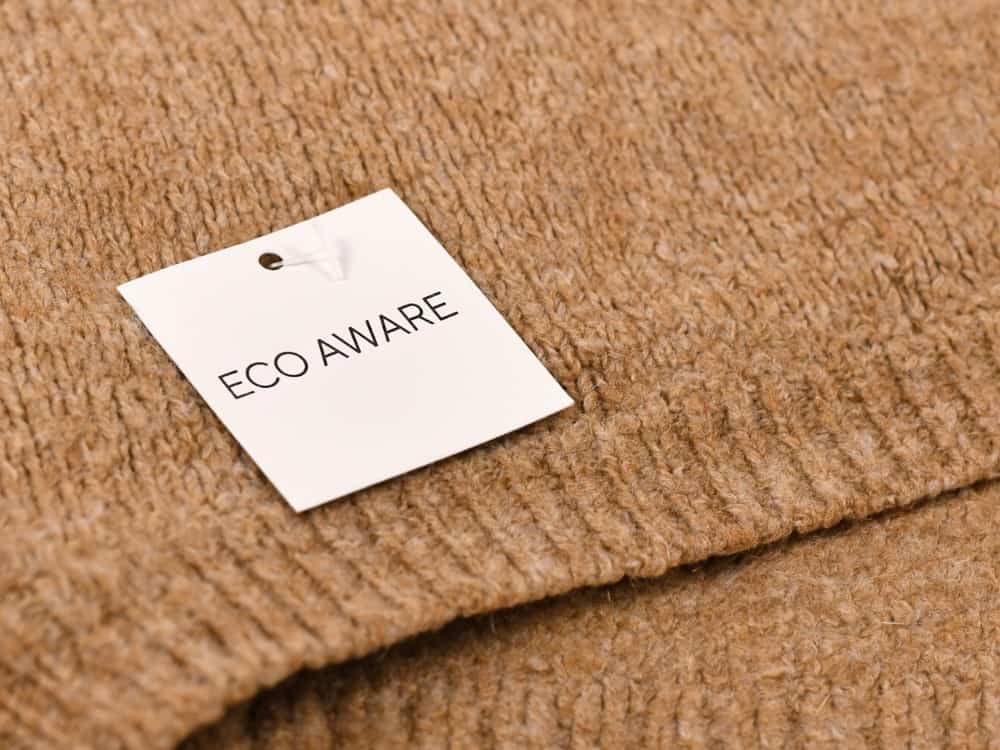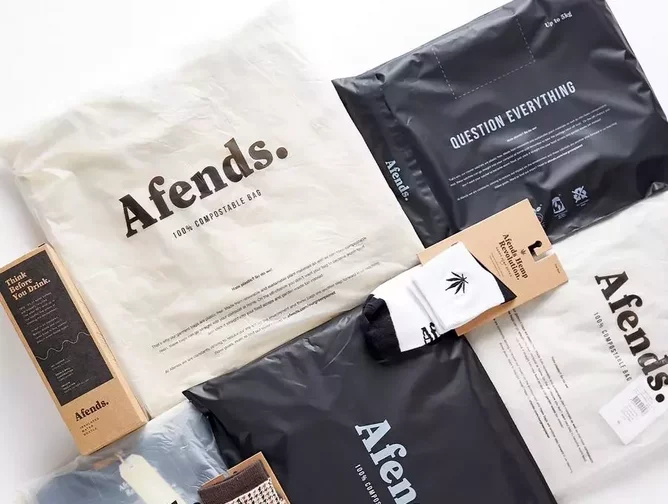Eco Elegance Technique
Eco-Friendly Fashion Guide
Fashion isn't just about looking good; it's about feeling good—inside and out—knowing your choices are kind to the earth.
Eco-Friendly Fashion Guide
Stylish, planet-friendly, and fair—this is eco-friendly fashion!
Environmental Conservation
Eco-friendly fashion minimizes waste and conserves resources, reducing the industry's carbon footprint.
Ethical Labor Practices
Supporting sustainable fashion ensures fair wages and safe working conditions for all workers.
Long-Term Value
High-quality, durable eco-friendly clothing reduces the need for replacements, saving money over time.
Understanding Eco-Friendly Fashion
What Is Eco-Friendly Fashion?
Eco-friendly fashion focuses on reducing the environmental impact of clothing. Designers use sustainable materials like organic cotton, hemp and bamboo. Production processes minimise waste and pollution. By choosing these practices, brands reduce their carbon footprint and conserve natural resources. Ethical labour practices also play a role. This means fair wages and safe working conditions for garment workers. Transparency in supply chains ensures that every step, from raw material sourcing to production, respects both the environment and workers. Some brands also opt for slow fashion, which means producing fewer but higher quality items that last longer, reducing the need for constant replacements.
Benefits of Sustainable Clothing
Sustainable clothing offers several advantages. It significantly lowers environmental impact. Organic fabrics reduce chemical usage, preventing soil and water contamination. In addition, eco-friendly production methods conserve water and energy, reducing the fashion industry’s carbon footprint. Ethically made garments ensure fair treatment of workers. This translates to safer working conditions and fair wages. Consumers who opt for sustainable fashion contribute to more humane labour practices. Long-lasting, high-quality items lead to cost savings over time. While initial prices might be higher, reduced frequency of replacements balances costs. Consumers get better value, and less textile waste ends up in landfills. By choosing eco-friendly fashion, shoppers help create a more sustainable and ethical industry.


Key Elements of Eco-Friendly Clothing
Sustainable Materials
Sustainable fabrics form the foundation of eco-friendly fashion. Organic cotton, which eliminates the use of harmful pesticides, often serves as an example. Hemp and bamboo present alternative fibres; both require fewer resources than conventional cotton. Recycled materials like polyester contribute by repurposing waste products into new garments. Modal, made from beech tree pulp, offers a biodegradable option. By choosing these materials, conscientious consumers reduce their environmental footprint.
Ethical Manufacturing Processes
Ethical manufacturing ensures fair treatment of workers and minimises environmental impact. Brands with Fair Trade certification maintain labour standards, providing safe conditions and fair wages. Transparency in supply chains indicates a brand’s commitment to ethical practices. Low-impact dyes, used by eco-conscious companies, prevent harmful chemical runoff. Factories employing energy-efficient practices further reduce the carbon footprint of garment production. Selecting brands with these practices supports ethical production and sustainability.
How to Identify Eco-Friendly Brands
Labels and Certifications to Look For
Recognising eco-friendly brands becomes easier by understanding certain labels and certifications. Fashion labels such as GOTS (Global Organic Textile Standard) indicate that products meet stringent ecological and social criteria. GOTS-certified items, like organic cotton garments, assure sustainable production from raw material harvesting to manufacturing. Fair Trade Certified labels guarantee fair wages and safe working conditions for labourers. Products featuring this label, such as Fair Trade sewn clothing, contribute to ethical practices and community development. Bluesign certifications signal reduced environmental impact in textile manufacturing. Bluesign-approved products, including eco-friendly dyes, meet rigorous safety and sustainability standards throughout the production process.
Questions to Ask Brands
Interacting with brands reveals their commitment to sustainability. I often ask about the materials used in their products. For example, if a brand uses organic cotton or recycled polyester, it shows a dedication to reducing environmental impact. Questions about the brand’s labour practices are equally crucial. I usually ask if they ensure fair wages and safe conditions for workers. Brands that practice transparency will readily share this information. Inquiring about a brand’s carbon footprint can be enlightening. I typically ask how they are reducing emissions or whether they use renewable energy. Brands focusing on energy efficiency and sustainability are proactive in their environmental responsibilities. Understanding how to identify eco-friendly brands involves recognising key labels, asking pertinent questions, and ensuring that a brand’s values align with sustainable practices. Shopping with this awareness supports a greener fashion industry.


Trends and Innovations in Eco-Friendly Fashion
Recent Advances in Sustainable Fabrics
Innovative textiles redefine sustainable fashion. Researchers develop materials like Piñatex, derived from pineapple leaves, and Mylo, made from mycelium. These offer biodegradable alternatives to leather. Hemp, an old favourite, grows fast, needs minimal water, and enriches soil, making it eco-friendly. Tencel, produced from wood pulp, uses a closed-loop process, recycling nearly all chemicals involved. Additionally, recycled fabrics like Econyl and Repreve convert plastic waste into versatile fibres, reducing ocean pollution. These advances demonstrate how technology can foster sustainability within fashion, offering diverse eco-friendly fabric options.
Popular Eco-Friendly Fashion Brands
Several brands lead sustainable fashion. Patagonia uses recycled materials and provides extensive transparency about its supply chain. Stella McCartney, a pioneer in eco-friendly luxury, commits to faux leather and organic fabrics. People Tree follows Fair Trade principles and supports local artisans. Reformation calculates the environmental impact of each item, ensuring accountability. Nudie Jeans focuses on organic cotton and offers free repairs and recycling. These brands exemplify how ethical practices and innovative materials can coexist, providing consumers with stylish yet sustainable wardrobe choices.
Ways to Make Your Wardrobe More Sustainable
Purchasing from Responsible Brands
Choosing brands committed to sustainability can drastically improve the eco-friendliness of your wardrobe. Look for certifications like Global Organic Textile Standard (GOTS), Fair Trade, and Bluesign. These certifications ensure ethical practices in material sourcing and labour. Another way to support sustainable brands is by researching their values and production processes. Many brands offer transparency reports detailing their environmental impact. By prioritising these aspects, you contribute to a greener and fairer fashion industry.
Caring for Clothes Sustainably
Maintaining your clothing well can extend its life and reduce waste. Wash clothes at lower temperatures; this conserves energy and prevents fabric damage. Air-drying instead of using a tumble dryer can further minimise your carbon footprint. Use eco-friendly detergents to reduce harmful chemicals entering waterways. When mending or altering clothes, seek out skilled local repair shops. This not only preserves your garments but also supports local artisans. By following these care practices, you’ll sustain your wardrobe’s life and lessen its environmental impact.

